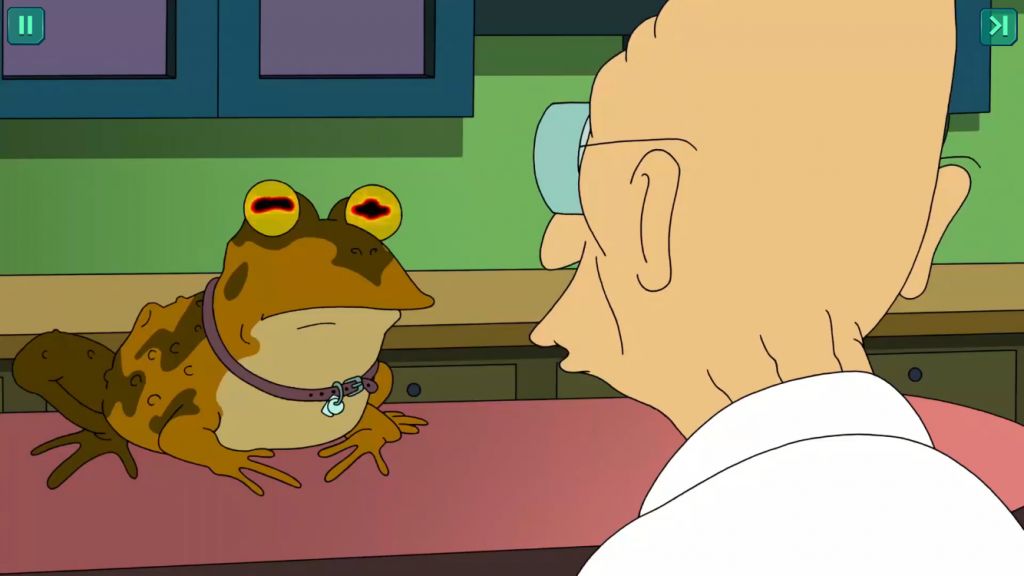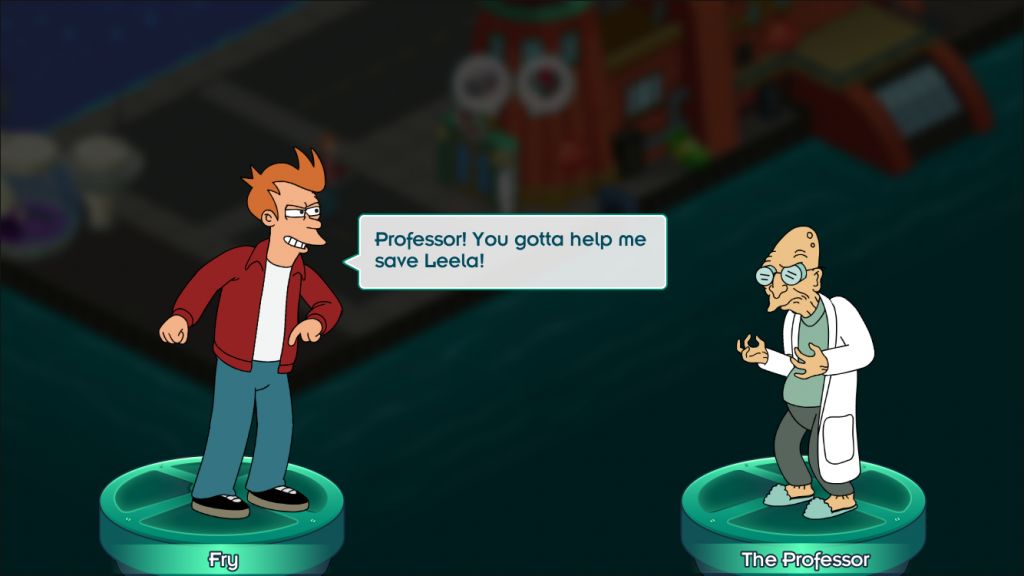Futurama: Worlds of Tomorrow begins with the same humour and charisma as the TV series on which it’s based. The Professor, under the spell of a male Hypnotoad, creates a portal through which the Hypnotoad can meet its female counterpart, inadvertently causing two parallel worlds to combine. The New York of 3000AD is torn apart, causing each character to be separated. Only Fry remains on what little area is left of their home, so it’s down to him to find eight artefacts that can revert the world back to its normal state, while saving each character along the way. It’s a stupid, crazy concept, but one that’s in line with the show’s tone.
Each character you unlock brings with it new and unique missions; The Professor can be sent to a local store to complain about its prices, whereas Bender’s missions are mainly alcohol-related. Together, though, your team can be send to other planets, which offer different challenges and rewards. Upon completing these you’ll be given a range of experience points, dollars, Hynotons, and chips. After gaining enough, experience points level you up, which in itself awards you more key items; dollars can be used to purchase items for you to place in your new New York; Hynotons are spent on breaking the link between both parallel worlds, unlocking the areas previously lost; and chips, alongside dollars, upgrade your team of Futurama characters. While this sounds more action adventure than anything else, Worlds of Tomorrow is predominantly a simulation game: invest your in-game currency in buildings and they will continue to provide you with more dollars and experience points – after a certain period of time, of course.

Futurama: Worlds of Tomorrow manages to cleverly utilize each character and their story so that no two missions are the same. Each has a different style of humour and branch of narrative, so there’s much less of a chance of players finding the game tedious than if it was told purely through one character’s perspective. The issue is, though, that, in the simulation-side of the game, progress takes so long. In order to unlock new areas and characters Hypnotons are required, and these are rewarded for completing extra-terrestrial missions. However, completing one mission alone won’t provide you with enough, so you’re forced into re-doing the same story over and over. What makes this even more difficult is that fuel is required; run out of this, and you’ll have to wait until your supply automatically increases by one every 15 minutes. Even the simpler missions prove to be difficult. Some characters ask for certain buildings to be placed, many of which cost over $1,000; with the buildings you have at the start – some of which drop $50 every three hours – this would take days to make.

There is one alternative that players can take: pizza slices speed up the time it takes for things to be built and thus items to be rewarded. There’s a catch, though: these are rarely dropped, and can be bought with actual money. It’s easy to draw conclusions here, and the developer has created a fun, witty game. Yet with constant pop-ups ramming offers to buy in-game currency down your throat, it’s hard not to think Futurama: Worlds of Tomorrow isn’t just an exercise in collecting money. With the name behind it, it’s a ploy that will undoubtedly work; it’s just a shame those fans weren’t rewarded with a genuinely good game instead.
Futurama: Worlds of Tomorrow is available on iOS and Android.













